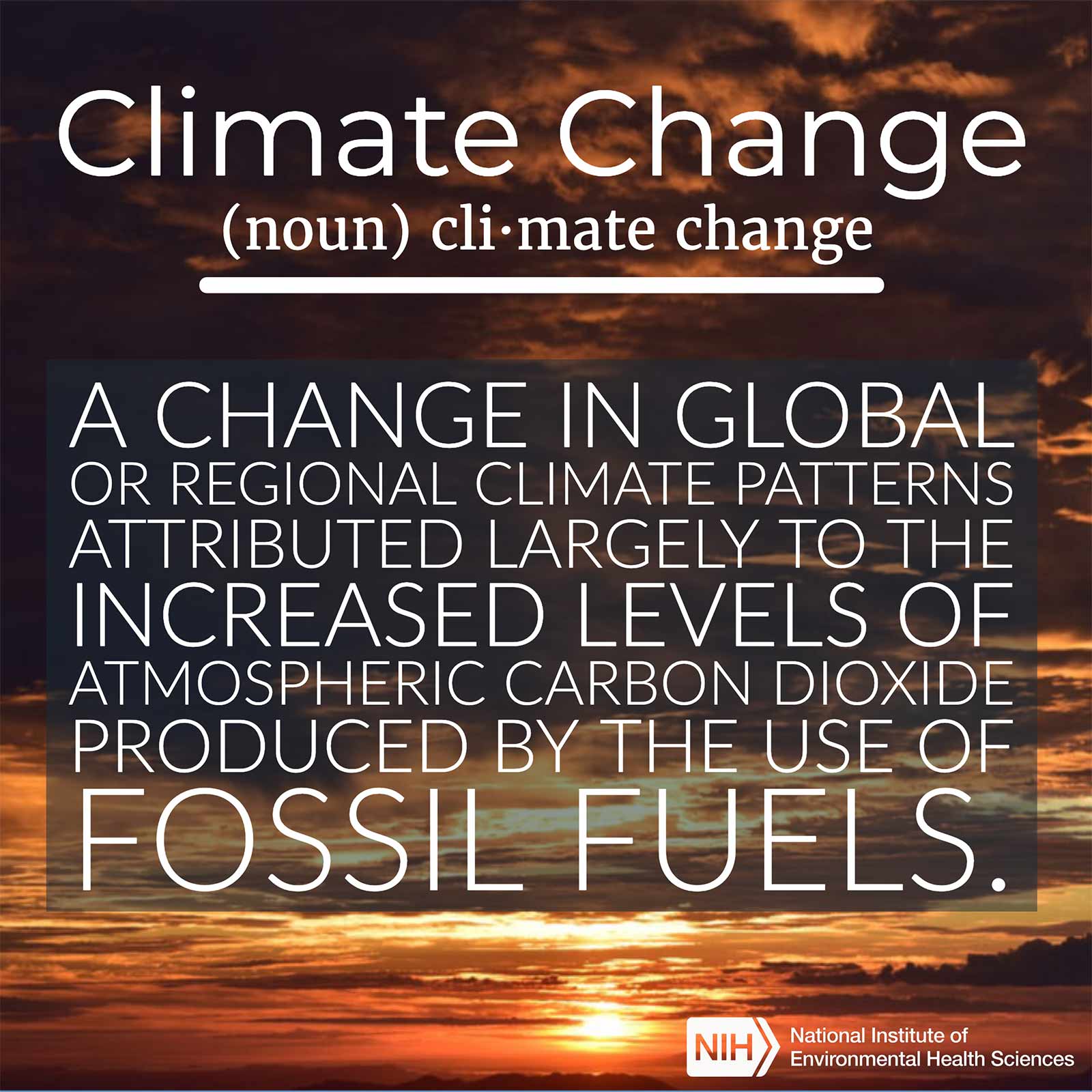NIEHS celebrated the 50th anniversary of Earth Day on April 22 with a talk by Sushma Masemore titled “North Carolina’s Commitment to Address Climate Change and Transition to a Clean Energy Environment.” She is the state’s energy director and the deputy assistant secretary for environment in the North Carolina Department of Environmental Quality (DEQ). The institute is located in the Tar Heel State, so Masemore’s policy insights were especially relevant to the NIEHS community.
 Moved to act after witnessing environmental damage caused by an oil spill near Santa Barbara, California, U.S. Senator Gaylord Nelson founded Earth Day on April 22, 1970.
Moved to act after witnessing environmental damage caused by an oil spill near Santa Barbara, California, U.S. Senator Gaylord Nelson founded Earth Day on April 22, 1970.“She plays a key role in the development of the Clean Energy Plan and the implementation of policies related to Executive Order 80,” said Paul Johnson, head of the institute’s environmental protection and stewardship programs. Signed by Governor Roy Cooper in 2018, the order sets ambitious goals to lessen the effects of climate change.
Alarming predictions
“Executive Order 80 recognizes that climate change [affects] our people, our economy, our way of life, our natural and built infrastructure, and our environment,” said Masemore. She cited a report released in March by the North Carolina Institute for Climate Studies that shows alarming projections for the state in the 21st century.
 “We know that carbon dioxide concentrations are increasing rapidly, and science does tell us that the primary cause is the burning of fossil fuels,” said Masemore. (Photo courtesy of Sushma Masemore)
“We know that carbon dioxide concentrations are increasing rapidly, and science does tell us that the primary cause is the burning of fossil fuels,” said Masemore. (Photo courtesy of Sushma Masemore)- Virtually certain increases, or 99-100% probability: Sea level; storm surge flooding in coastal areas; and atmospheric water vapor content over the state.
- Very likely increases, or 90-100% probability: Temperatures; number of very warm nights; extreme precipitation frequency and intensity; and heavy precipitation from hurricanes.
- Likely increases, or 66-100% probability: Annual total precipitation; severe thunderstorm frequency; inland flooding; drought intensity; and frequency of conditions that promote wildfires.
Those and other changes may occur if decision-makers do nothing, according to Masemore. But North Carolina leaders have not stood idly by, she said.
Reducing greenhouse gas emissions
Greenhouse gases (GHGs) are a major focus because they drive climate change, Masemore noted. “As a state, we have reduced our GHG emissions by almost 24% [since 2005],” she said.
To build on that success, Executive Order 80 seeks a 40% reduction from 2005 levels by 2025. It calls for increasing the number of registered zero-emissions vehicles to 80,000 and for state buildings to decrease energy use per square foot by 40% from 2002 levels. Further, state agencies must incorporate climate change mitigation strategies in their operations.
At DEQ, Masemore and her colleagues developed an energy plan for North Carolina after consulting citizens, business leaders, and academics. “We set a goal of achieving 70% reduction in GHG emissions from the power sector by 2030 and achieving [net zero carbon emissions] by 2050,” she said. Several factors make those objectives possible, explained Masemore.
Breakthroughs in solar and wind power, battery storage, and electric transmission technologies mean consumers and utilities have more cost-effective, zero-emissions options. Also, there is buy-in from business and academic institutions, many of which have goals that meet or exceed those of the state.
 “We are making energy conservation at [NIEHS] a renewed priority, focusing on measures that not only improve our energy efficiency but also reduce our carbon emissions,” said Woychik. (Photo courtesy of Steve McCaw)
“We are making energy conservation at [NIEHS] a renewed priority, focusing on measures that not only improve our energy efficiency but also reduce our carbon emissions,” said Woychik. (Photo courtesy of Steve McCaw)Environmental stewardship
“Earth Day began in the U.S. as a day to advocate for environmental stewardship and has become the largest civic observance in the world,” said NIEHS Acting Director Rick Woychik, Ph.D., in a message to employees.
“Here at NIEHS, we have much to celebrate regarding our environmental stewardship, including expanding wildlife habitat, reducing our energy intensity, increasing our on-site solar energy generation, diverting most of our waste from landfill, decreasing our potable water use at the Central Utility Plant, and planning for climate resiliency,” he noted.
(Jesse Saffron, J.D., is a technical writer-editor in the NIEHS Office of Communications and Public Liaison.)










